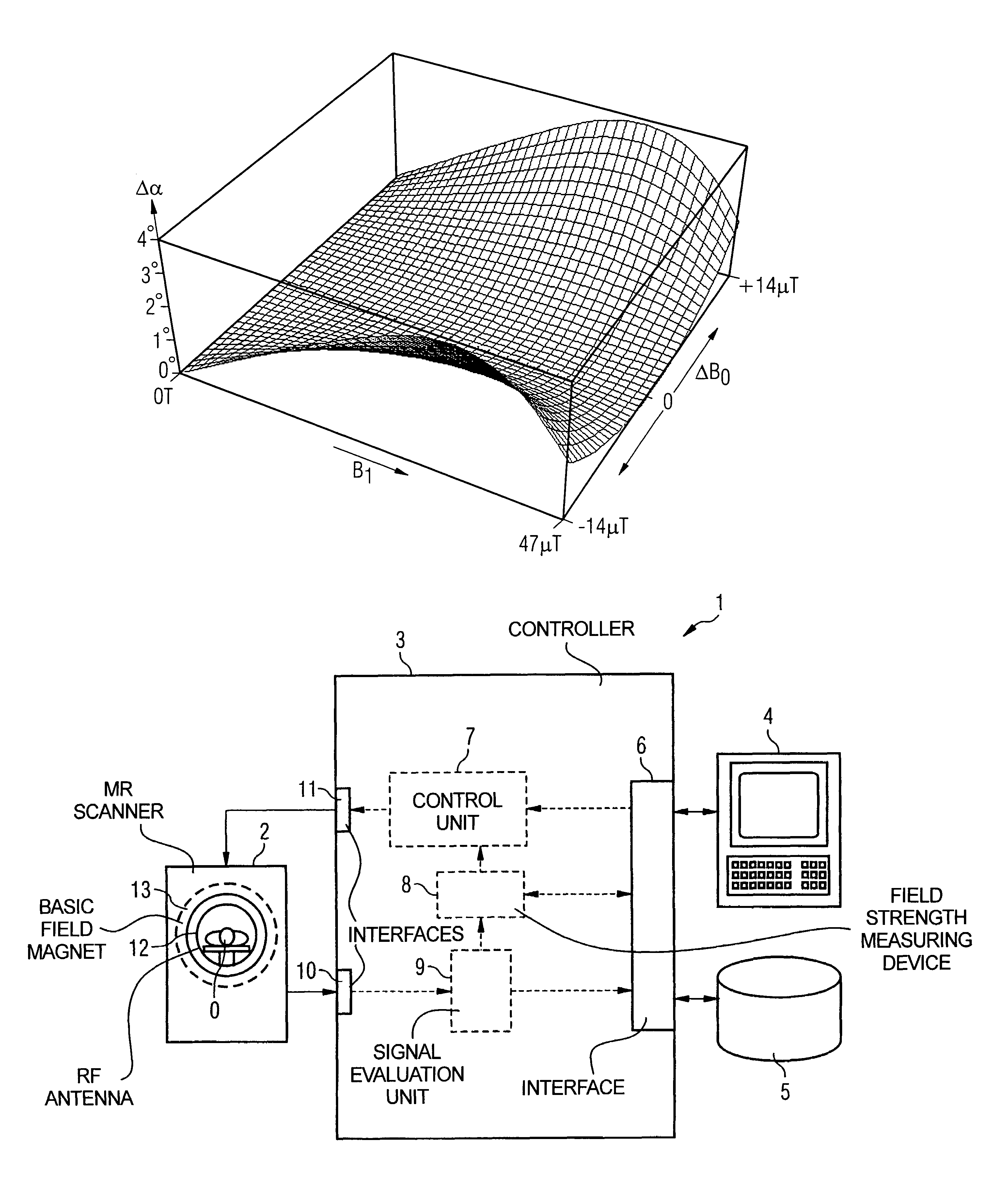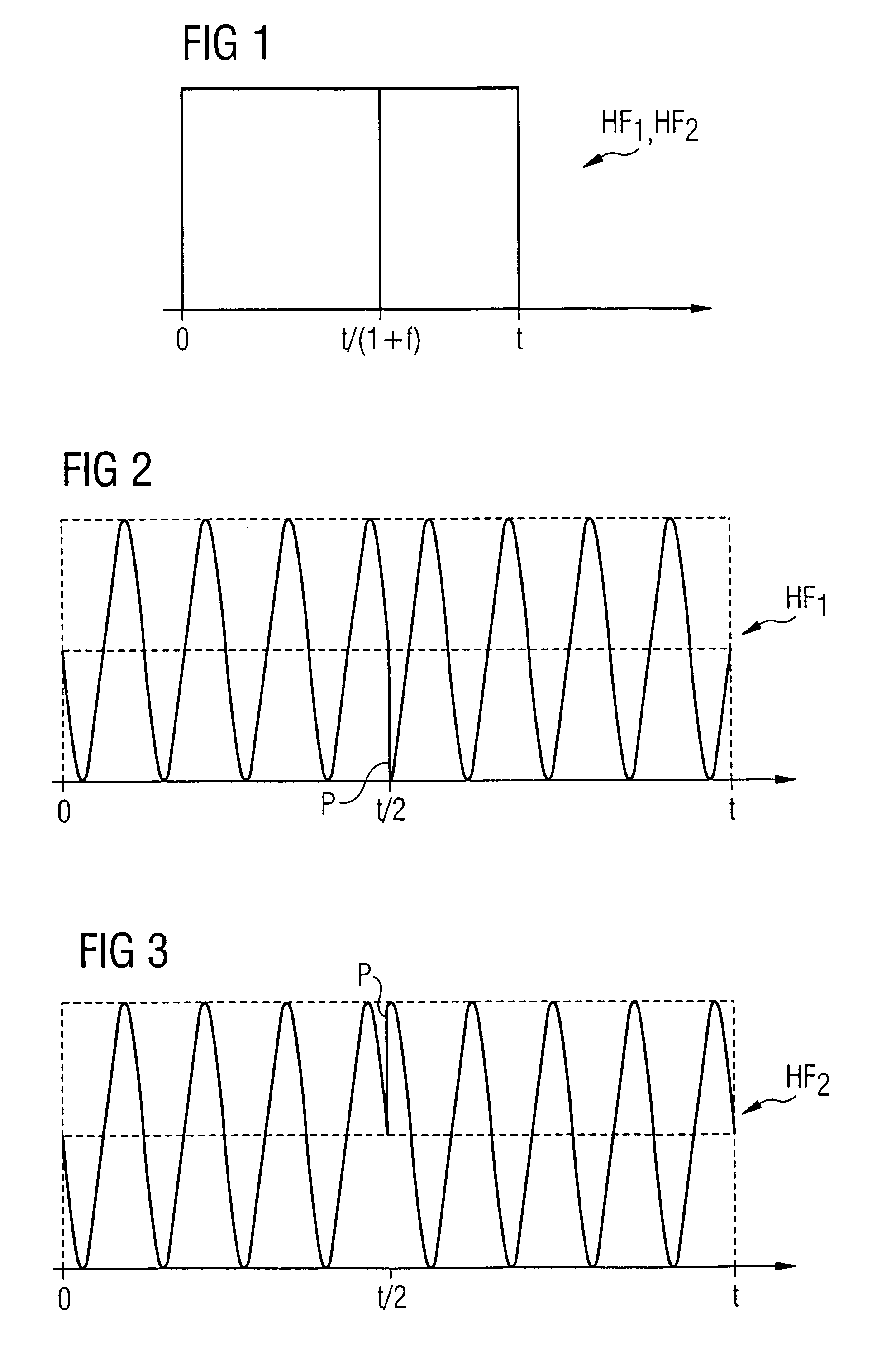Method for determining the B1 field strength in MR measurements
a technology of mr measurement and field strength, applied in the direction of magnetic measurement, instruments, measurement devices, etc., can solve the problems of radio-frequency pulses, number of different techniques already exist, and inability to accurately determine the field strength of radiofrequency pulses
- Summary
- Abstract
- Description
- Claims
- Application Information
AI Technical Summary
Benefits of technology
Problems solved by technology
Method used
Image
Examples
Embodiment Construction
[0038]In order to provide a detailed explanation of the method, it will first be shown how, using simple radio-frequency excitation pulses, a clear relationship is possible between a phase angle of the attained transverse magnetization which can be detected as the phase position of the magnetic resonance signal and the B1 field amplitude. In the present exemplary embodiment, for simplicity—but without restricting the inventive concept—a radio-frequency pulse HF1, HF2 with duration t will be assumed with a rectangular amplitude curve according to FIG. 1. This radio-frequency pulse HF1, HF2 is present from a starting time point 0 up to the time point t / (1+f) with a phase of 0° and afterwards with a phase of 90° (the indications refer to a rotating coordinate system or rather the interaction image). The factor f is a constant factor.
[0039]FIG. 2 shows a special exemplary embodiment for the case in which f=1. The envelope pulse shape of the radio-frequency pulse HF1 corresponds here to ...
PUM
 Login to View More
Login to View More Abstract
Description
Claims
Application Information
 Login to View More
Login to View More - R&D
- Intellectual Property
- Life Sciences
- Materials
- Tech Scout
- Unparalleled Data Quality
- Higher Quality Content
- 60% Fewer Hallucinations
Browse by: Latest US Patents, China's latest patents, Technical Efficacy Thesaurus, Application Domain, Technology Topic, Popular Technical Reports.
© 2025 PatSnap. All rights reserved.Legal|Privacy policy|Modern Slavery Act Transparency Statement|Sitemap|About US| Contact US: help@patsnap.com



